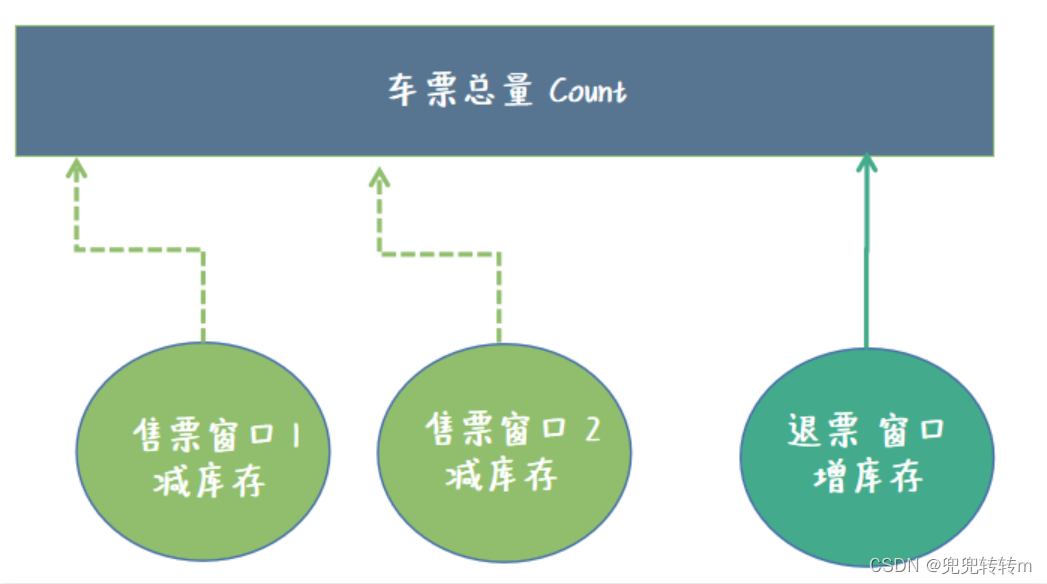U2Net
- 1 相关参考
- 2 U 2 − N e t U^2-Net U2−Net 网络结构
- 3 网络代码和测试
1 相关参考
论文名称: U2-Net: Goging Deeper with Nested U-Structure for Salient Object Detetion
论文地址: https://arxiv.org/abs/2005.09007
官方源码: https://github.com/xuebinqin/U-2-Net
参考代码: Pytorch UNet
参考博客: https://blog.csdn.net/qq_37541097/article/details/126255483
参考视频: bilibili 我为霹导举大旗
建议大家可以先看霹导的原理讲解视频和代码讲解视频,代码写的真的太优雅了,以下内容作为自己对重点的记录和一些代码中的修改!
2 U 2 − N e t U^2-Net U2−Net 网络结构
整体结构:
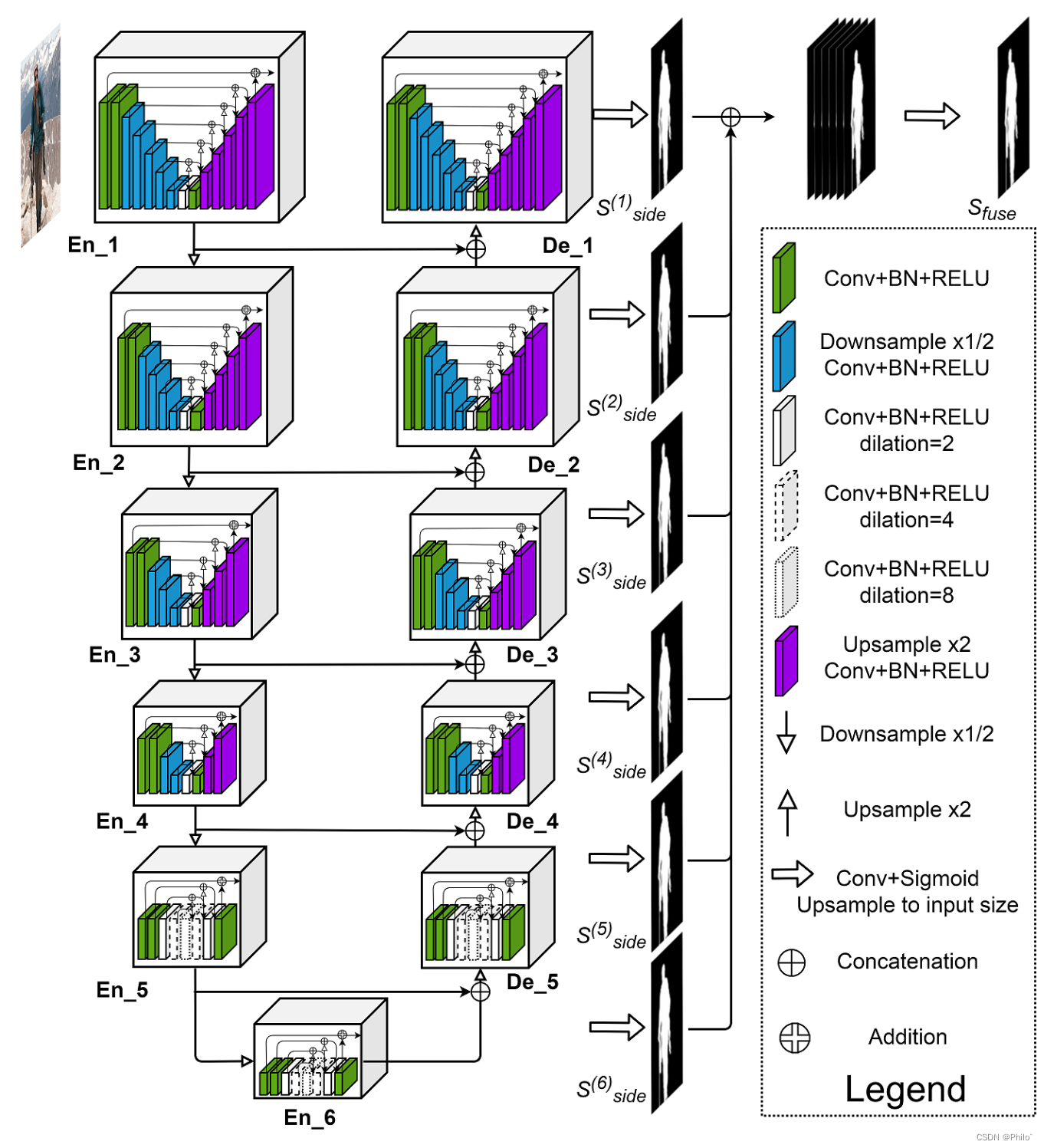
保留了原始的U-Net网络结构,只是将每一个Block的内部结构做了很大的调整,换成了一个U-Net,同时针对整个结构的输出做出调整,在训练时,给六个输出进行loss计算,在测试时只得到一个输出。
Block结构RSU:
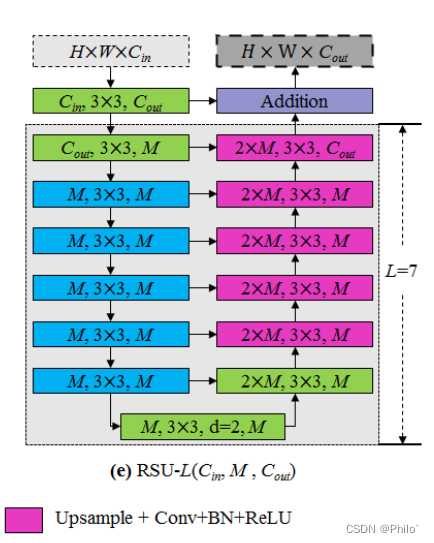
这里Block,除了输入和输出的通道会发生变化,在中间层进行卷积时,使用的通道数都是Mid_channels,同时在最下层的卷积中,使用的是膨胀卷积。 这里的L=7,指的是RSU-7,是En_1和Dn_1的内部结构,在前四层中,都是使用的是RSU结构;
在后面的两层中,使用的是RSU-4F,其中的卷积层使用的是膨胀卷积,避免因为深度太深,导致图像尺寸太小,丢失特征,RSU-4F结构如下:
RSU-4F:
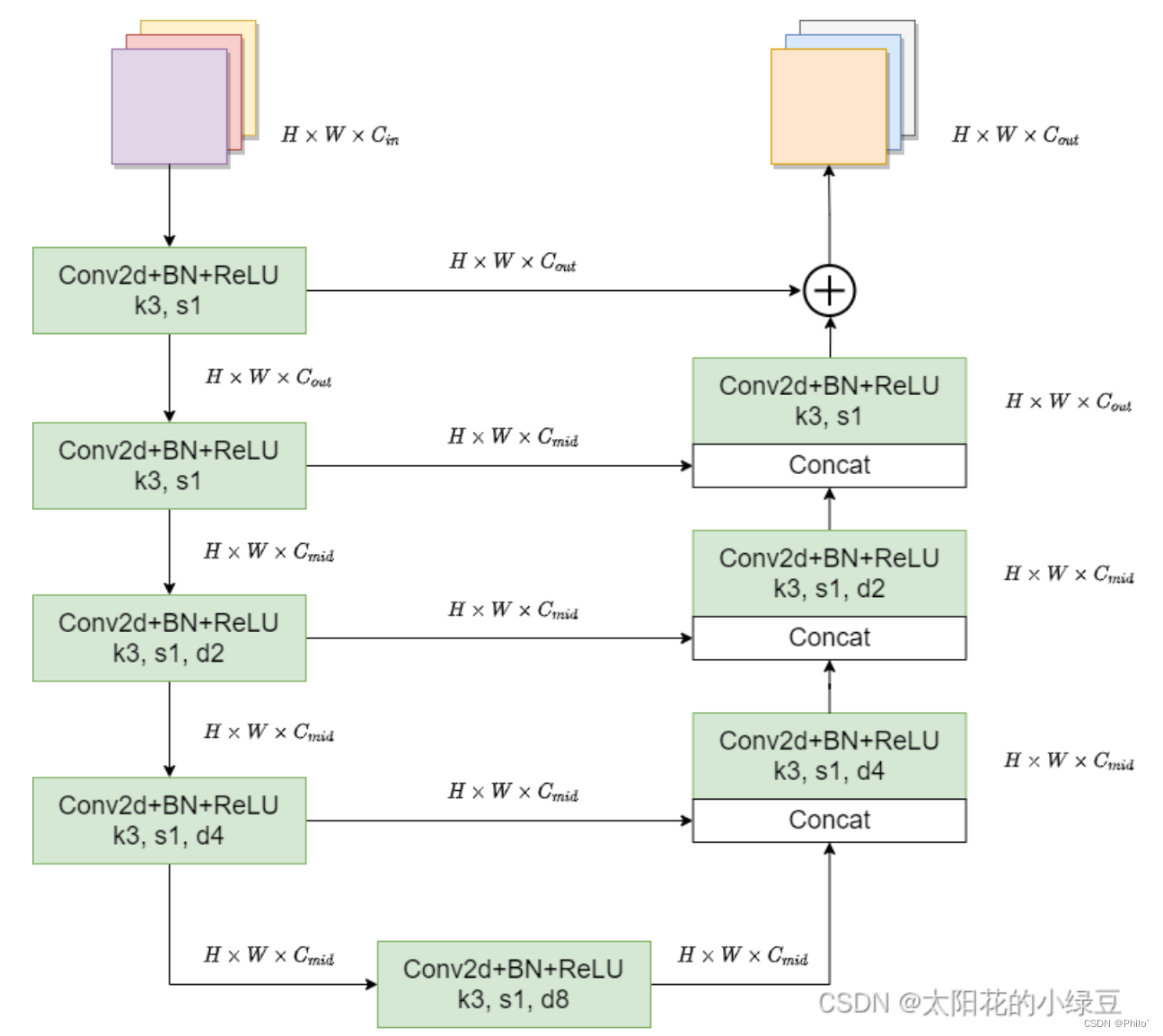
这里向下使用了两层的膨胀卷积,进行特征恢复,避免因为网络深度太深,导致特征丢失的问题!
损失函数:
网络在训练的时候,是对六个输出分别和GT进行BCE(二值交叉熵)计算,然后对损失求和进行反向传播,公式如下:
L
=
∑
m
=
1
M
w
side
(
m
)
l
side
(
m
)
+
w
fuse
l
fuse
L=\sum_{m=1}^{M} w_{\text {side }}^{(m)} l_{\text {side }}^{(m)}+w_{\text {fuse }} l_{\text {fuse }}
L=m=1∑Mwside (m)lside (m)+wfuse lfuse
在本网络中,前面一部分是六个输出和GT的损失,第二部分是最后的融合图像和GT的损失,代码如下:
import torch
import torch.nn as nn
from torch.nn import functional as F
class U2criterion(nn.Module):
def __init__(self):
super(U2criterion, self).__init__()
def forward(self, inputs, target):
losses = [F.binary_cross_entropy_with_logits(inputs[i], target) for i in range(len(inputs))]
total_loss = sum(losses)
return total_loss
3 网络代码和测试
from typing import Union, List
import torch
import torch.nn as nn
import torch.nn.functional as F
class ConvBNReLU(nn.Module):
def __init__(self, in_ch, out_ch, kernel_size=3, dilation=1):
super().__init__()
padding = kernel_size // 2 if dilation == 1 else dilation # 保持图像大小不变
self.conv = nn.Sequential(
nn.Conv2d(in_ch, out_ch, kernel_size=kernel_size, padding=padding, dilation=dilation, bias=False), # 因为后面有BN,bias不起作用
nn.BatchNorm2d(out_ch),
nn.ReLU(inplace=True)
)
def forward(self, x):
return self.conv(x)
class DownConvBNReLu(ConvBNReLU):
def __init__(self, in_ch, out_ch, kernel_size=3, dilation=1, flag=True):
super().__init__(in_ch, out_ch, kernel_size, dilation)
self.down_flag = flag
def forward(self, x):
if self.down_flag:
x = F.max_pool2d(x, kernel_size=2, stride=2, ceil_mode=True)
return self.conv(x)
class UpConvBNReLU(ConvBNReLU):
def __init__(self, in_ch, out_ch, kernel_size=3, dilation=1, flag=True):
super().__init__(in_ch, out_ch, kernel_size, dilation)
self.up_flag = flag
def forward(self, x1, x2): # x1为下面传入的, x2为左边传入的
if self.up_flag:
x1 = F.interpolate(x1, size=x2.shape[2:], mode="bilinear", align_corners=False)
x = torch.cat([x1, x2], dim=1)
return self.conv(x)
class RSU(nn.Module):
def __init__(self, height, in_ch, mid_ch, out_ch):
super().__init__()
assert height >= 2
self.conv_in = ConvBNReLU(in_ch, out_ch) # 这个是不算在height上的
encode_list = [DownConvBNReLu(out_ch, mid_ch, flag=False)]
decode_list = [UpConvBNReLU(mid_ch*2, mid_ch, flag=False)]
for i in range(height-2): # 含有上下采样的模块
encode_list.append(DownConvBNReLu(mid_ch, mid_ch))
decode_list.append(UpConvBNReLU(mid_ch*2, mid_ch if i < height-3 else out_ch)) # 这里最后的decode的输出是out_ch
encode_list.append(ConvBNReLU(mid_ch, mid_ch, dilation=2))
self.encode_modules = nn.ModuleList(encode_list)
self.decode_modules = nn.ModuleList(decode_list)
def forward(self, x):
x_in = self.conv_in(x)
x = x_in
encode_outputs = []
for m in self.encode_modules:
x = m(x)
encode_outputs.append(x)
x = encode_outputs.pop() # 这是移除list最后的一个数据,并且将该数据赋值给x,这里的x是含有空洞卷积的输出
for m in self.decode_modules:
x2 = encode_outputs.pop() # 这里是倒数第二深的输出,x表示下面的,x2表示左边的
x = m(x, x2) # 将下面的,和左边的一起传入到上卷积中
return x + x_in # 这里是最上面一层进行相加
class RSU4F(nn.Module):
def __init__(self, in_ch, mid_ch, out_ch):
super().__init__()
self.conv_in = ConvBNReLU(in_ch, out_ch)
self.encode_modules = nn.ModuleList([ConvBNReLU(out_ch, mid_ch),
ConvBNReLU(mid_ch, mid_ch, dilation=2),
ConvBNReLU(mid_ch, mid_ch, dilation=4),
ConvBNReLU(mid_ch, mid_ch, dilation=8)])
self.decode_modules = nn.ModuleList([ConvBNReLU(mid_ch*2, mid_ch, dilation=4),
ConvBNReLU(mid_ch*2, mid_ch, dilation=2),
ConvBNReLU(mid_ch*2, out_ch)])
def forward(self, x):
x_in = self.conv_in(x)
x = x_in
encode_outputs = []
for m in self.encode_modules:
x = m(x)
encode_outputs.append(x)
x = encode_outputs.pop()
for m in self.decode_modules:
x2 = encode_outputs.pop()
x = m(torch.cat([x, x2], dim=1))
return x+x_in
class U2Net(nn.Module):
def __init__(self, cfg, out_ch=1):
super().__init__()
assert "encode" in cfg
assert "decode" in cfg
self.encode_num = len(cfg["encode"])
encode_list = []
side_list = []
for c in cfg["encode"]:
# [height, in_ch, mid_ch, out_ch, RSU4F, side]
assert len(c) == 6
encode_list.append(RSU(*c[:4]) if c[4] is False else RSU4F(*c[1:4])) # 这里的*是将列表解开为单独的数值,这样才能传入到函数中
if c[5] is True:
side_list.append(nn.Conv2d(c[3], out_ch, kernel_size=3, padding=1))
self.encode_modules = nn.ModuleList(encode_list)
decode_list = []
for c in cfg["decode"]:
assert len(c) == 6
decode_list.append(RSU(*c[:4]) if c[4] is False else RSU4F(*c[1:4]))
if c[5] is True:
side_list.append(nn.Conv2d(c[3], out_ch, kernel_size=3, padding=1))
self.decode_modules = nn.ModuleList(decode_list)
self.side_modules = nn.ModuleList(side_list)
self.out_conv = nn.Conv2d(self.encode_num*out_ch, out_ch, kernel_size=1) # 这里是针对cat后的结果进行卷积,得到最后的out_ch=1
def forward(self, x):
_, _, h, w = x.shape
encode_outputs = []
for i, m in enumerate(self.encode_modules):
x = m(x)
encode_outputs.append(x)
if i != self.encode_num - 1: # 除了最后一个encode_block不用下采样,其余每一个block都需要下采样
x = F.max_pool2d(x, kernel_size=2, stride=2, ceil_mode=True)
x = encode_outputs.pop()
decode_outputs = [x]
for m in self.decode_modules:
x2 = encode_outputs.pop()
x = F.interpolate(x, size=x2.shape[2:], mode="bilinear", align_corners=False)
x = m(torch.cat([x, x2], dim=1))
decode_outputs.insert(0, x) #这里是保证了从上到下的decode层的输出,在列表中的遍历是从0到5
side_outputs = []
for m in self.side_modules:
x = decode_outputs.pop()
x = F.interpolate(m(x), size=[h,w], mode="bilinear", align_corners=False)
side_outputs.insert(0, x)
x = self.out_conv(torch.cat(side_outputs, dim=1))
if self.training: # 在训练的时候,需要将6个输出都拿出来进行loss计算,
return [x] + side_outputs
else: # 非训练时,直接sigmoid后的数据
return torch.sigmoid(x)
# return torch.sigmoid(x)
def u2net_full(in_ch=3, out_ch=1):
cfg = {
# height, in_ch, mid_ch, out_ch, RSU4F, side
"encode": [[7, in_ch, 32, 64, False, False], # En1
[6, 64, 32, 128, False, False], # En2
[5, 128, 64, 256, False, False], # En3
[4, 256, 128, 512, False, False], # En4
[4, 512, 256, 512, True, False], # En5
[4, 512, 256, 512, True, True]], # En6
# height, in_ch, mid_ch, out_ch, RSU4F, side
"decode": [[4, 1024, 256, 512, True, True], # De5
[4, 1024, 128, 256, False, True], # De4
[5, 512, 64, 128, False, True], # De3
[6, 256, 32, 64, False, True], # De2
[7, 128, 16, 64, False, True]] # De1
}
return U2Net(cfg, out_ch)
def u2net_lite(in_ch=3, out_ch=1):
cfg = {
# height, in_ch, mid_ch, out_ch, RSU4F, side
"encode": [[7, in_ch, 16, 64, False, False], # En1
[6, 64, 16, 64, False, False], # En2
[5, 64, 16, 64, False, False], # En3
[4, 64, 16, 64, False, False], # En4
[4, 64, 16, 64, True, False], # En5
[4, 64, 16, 64, True, True]], # En6
# height, in_ch, mid_ch, out_ch, RSU4F, side
"decode": [[4, 128, 16, 64, True, True], # De5
[4, 128, 16, 64, False, True], # De4
[5, 128, 16, 64, False, True], # De3
[6, 128, 16, 64, False, True], # De2
[7, 128, 16, 64, False, True]] # De1
}
return U2Net(cfg, out_ch)
# net = u2net_full(1,1)
# x = torch.randn(16,1,256,256)
# net.eval()
# print(net(x))
- 这里u2net_full指的是完整的U2Net,u2net_lite,指的是轻量级的U2Net,这两个的唯一区别是,模块中的通道数不同;
- 指定网络的时候,需要指定网络输入通道和输出通道,这里的修改是为了自己使用网络的便利,原始网络中,默认输入通道是3;
- 轻量级模型的参数是完整性模型参数的1/40;
贴一个网络参数计算代码:
def count_parameters(model): # 传入的是模型实例对象
params = [p.numel() for p in model.parameters() if p.requires_grad]
# for item in params:
# print(f'{item:>16}') # 参数大于16的展示
print(f'________\n{sum(params):>16}') # 大于16的进行统计,可以自行修改
网络测试:
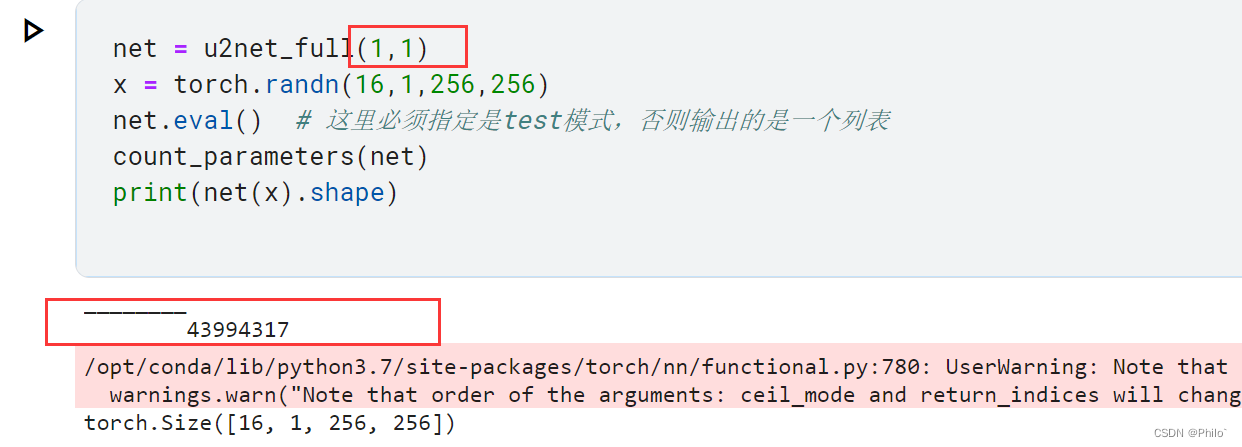

再说一下,霹导写的代码真的很优雅,可以去看霹导的代码讲解和网络结构讲解!!
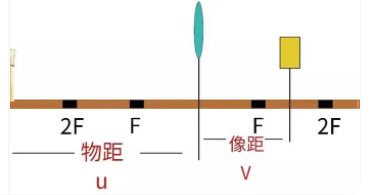




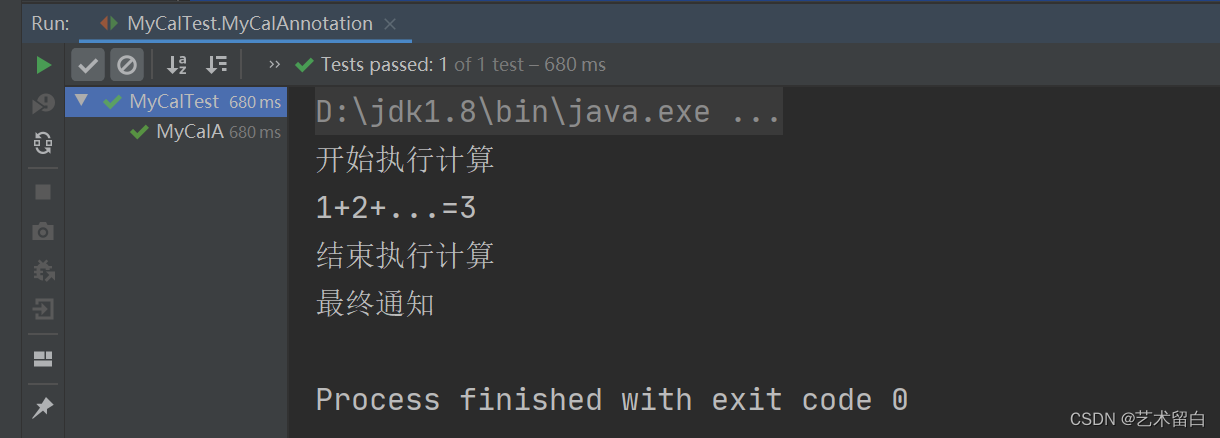


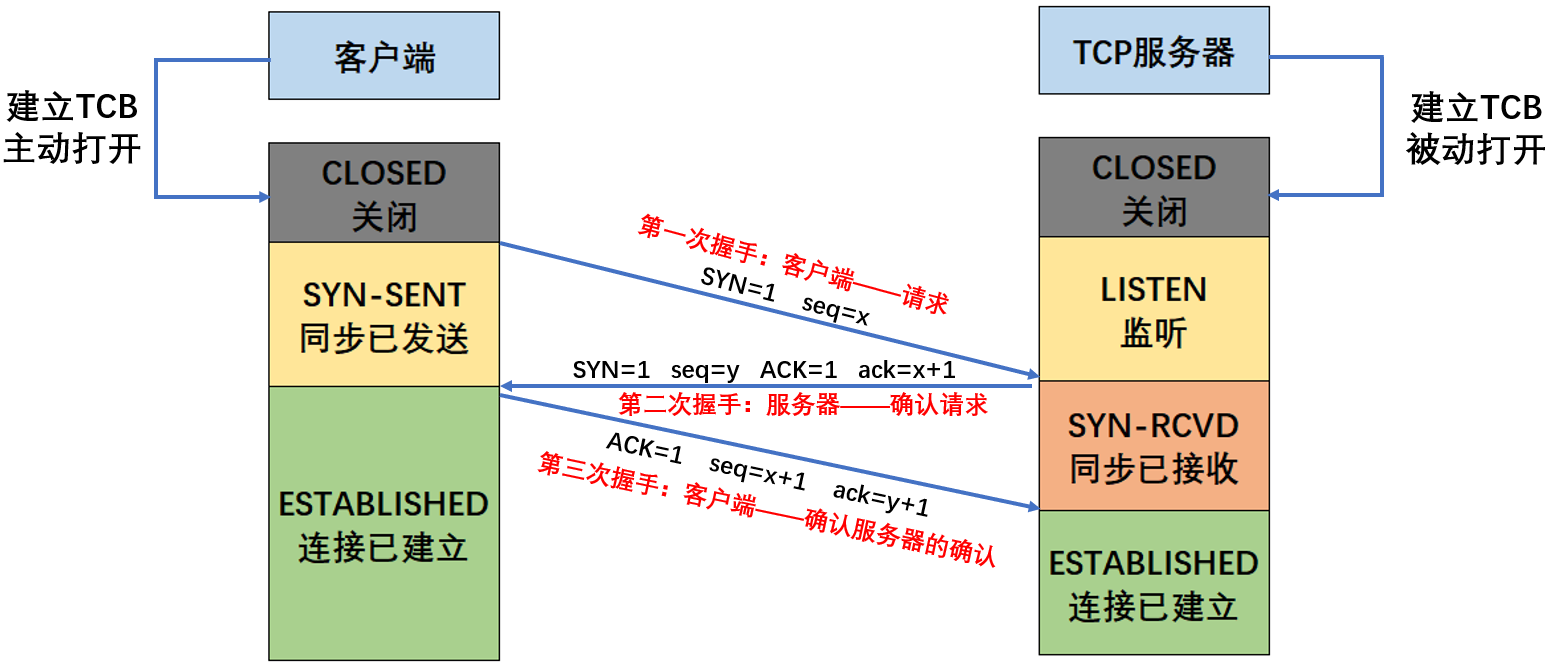




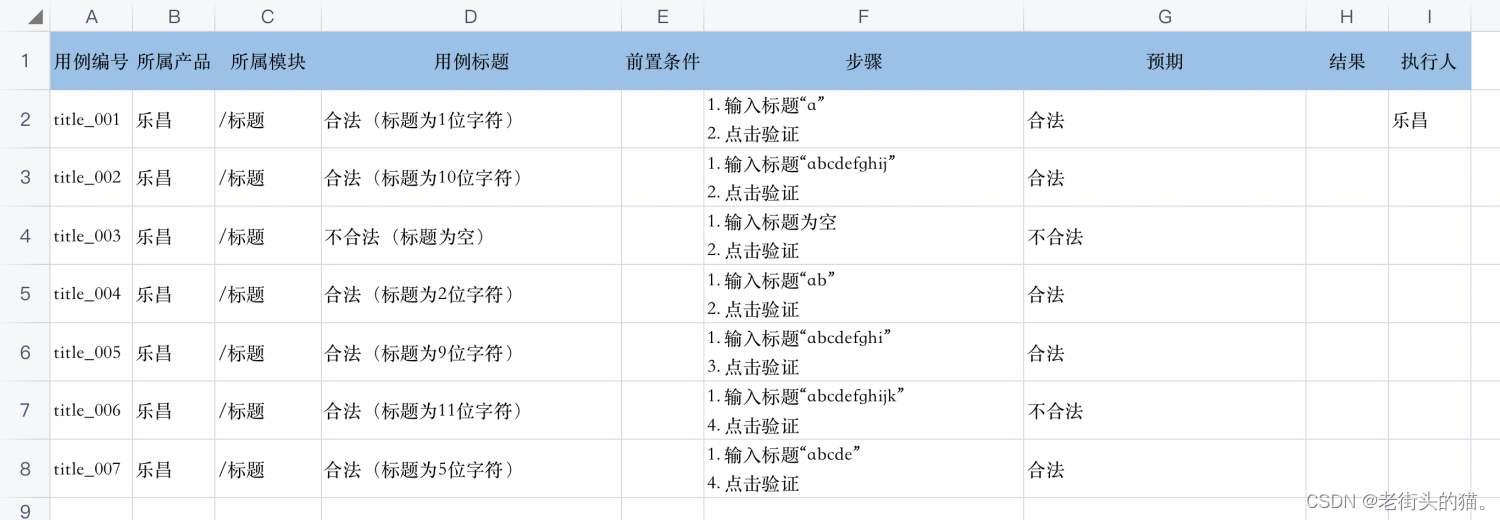
![[附源码]计算机毕业设计springboot电商小程序](https://img-blog.csdnimg.cn/f64b56c793b84f528a8837f773a7f4e4.png)
![[附源码]计算机毕业设计Springboot大学生志愿者服务管理系统](https://img-blog.csdnimg.cn/dd196b4ca6d54952abd4bdc894f5f4bf.png)


